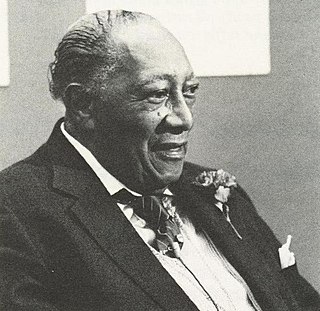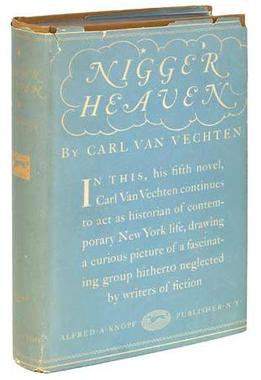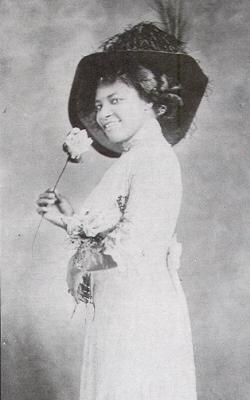
James Avery Hopwood was an American playwright of the Jazz Age. He had four plays running simultaneously on Broadway in 1920.

Countee Cullen was an American poet, novelist, children's writer, and playwright, particularly well known during the Harlem Renaissance.

Carl Van Vechten was an American writer and artistic photographer who was a patron of the Harlem Renaissance and the literary executor of Gertrude Stein. He gained fame as a writer, and notoriety as well, for his 1926 novel Nigger Heaven. In his later years, he took up photography and took many portraits of notable people. Although he was married to women for most of his adult years, Van Vechten engaged in numerous homosexual affairs over his lifetime.

James Augustus Van Der Zee was an American photographer best known for his portraits of black New Yorkers. He was a leading figure in the Harlem Renaissance. Aside from the artistic merits of his work, Van Der Zee produced the most comprehensive documentation of the period. Among his most famous subjects during this time were Marcus Garvey, Bill "Bojangles" Robinson and Countee Cullen.

Nigger Heaven is a novel written by Carl Van Vechten, and published in October 1926. The book is set during the Harlem Renaissance in the United States in the 1920s. The book and its title have been controversial since its publication.

The Niggerati was the name used, with deliberate irony, by Wallace Thurman for the group of young African-American artists and intellectuals of the Harlem Renaissance. "Niggerati" is a portmanteau of "nigger" and "literati". The rooming house where he lived, and where that group often met, was similarly christened Niggerati Manor. The group included Zora Neale Hurston, Langston Hughes, and several of the people behind Thurman's journal FIRE!!, such as Richard Bruce Nugent, Jonathan Davis, Gwendolyn Bennett, and Aaron Douglas.

Fania Marinoff was a Russian-born American actress.

James Richmond Barthé, also known as Richmond Barthé was an African-American sculptor associated with the Harlem Renaissance. Barthé is best known for his portrayal of black subjects. The focus of his artistic work was portraying the diversity and spirituality of man. Barthé once said: "All my life I have been interested in trying to capture the spiritual quality I see and feel in people, and I feel that the human figure as God made it, is the best means of expressing this spirit in man."

Wallace Henry Thurman was an American novelist active during the Harlem Renaissance. He also wrote essays, worked as an editor, and was a publisher of short-lived newspapers and literary journals. He is best known for his novel The Blacker the Berry: A Novel of Negro Life (1929), which explores discrimination within the black community based on skin color, with lighter skin being more highly valued.

Richard Bruce Nugent, aka Richard Bruce and Bruce Nugent, was a gay writer and painter in the Harlem Renaissance. Despite being a part of a group of many gay Harlem artists, Nugent was among only a few who were publicly out. Recognized initially for the few short stories and paintings that were published, Nugent had a long productive career bringing to light the creative process of gay and black culture.

A'Lelia Walker was an American businesswoman and patron of the arts. She was the only surviving child of Madam C. J. Walker, popularly credited as being the first self-made female millionaire in the United States and one of the first African American millionaires.

Rose McClendon was a leading African-American Broadway actress of the 1920s. A founder of the Negro People's Theatre, she guided the creation of the Federal Theatre Project's African American theatre units nationwide and briefly co-directed the New York Negro Theater Unit.

The Harlem Renaissance was an intellectual and cultural revival of African American music, dance, art, fashion, literature, theater, politics and scholarship centered in Harlem, Manhattan, New York City, spanning the 1920s and 1930s. At the time, it was known as the "New Negro Movement", named after The New Negro, a 1925 anthology edited by Alain Locke. The movement also included the new African American cultural expressions across the urban areas in the Northeast and Midwest United States affected by a renewed militancy in the general struggle for civil rights, combined with the Great Migration of African American workers fleeing the racist conditions of the Jim Crow Deep South, as Harlem was the final destination of the largest number of those who migrated north.

Nora Douglas Holt was a singer, composer and music critic, who was born in Kansas and was the first African American to receive a master's degree in music in the United States. She composed more than 200 works of music and was associated with the leading figures of the Harlem Renaissance and the co-founder of the National Association of Negro Musicians. She died in 1974 in Los Angeles.

Blanche Wolf Knopf was the president of Alfred A. Knopf, Inc., and wife of publisher Alfred A. Knopf Sr., with whom she established the firm in 1915. Blanche traveled the world seeking new authors and was especially influential in the publication of European and Latin American literature in the United States.
Charlotte Osgood Mason, born Charlotte Louise Van der Veer Quick, was an American socialite and philanthropist. She contributed more than $100,000 to a number of African-American artists and writers of the Harlem Renaissance, equal to more than $1 million in 2003. This was especially critical during the Great Depression, when foundation support declined. She helped young artists become established.

Prentiss Taylor was an American illustrator, lithographer, and painter. Born in Washington D.C., Taylor began his art studies at the Corcoran Gallery of Art, followed by painting classes under Charles Hawthorne in Provincetown, Massachusetts, and training at the Art Students League in New York City. In 1931, Taylor began studying lithography at the League. He became a member of one of the most important printmaking societies in America at that time, the Society of American Graphic Artists. Taylor interacted and collaborated with many writers and musicians in his time in New York in the late 1920s and early 30s. This was in the emergence of the Harlem Renaissance. Among his close friends and colleagues were Langston Hughes and Carl Van Vechten.
Emily Bernard is an American writer and the Julian Lindsay Green and Gold Professor of English at the University of Vermont.
Winifred Hall Allen was an American photographer who documented the Great Depression and the Harlem Renaissance. Her work explored the role of African Americans within professional and social realms. Her identity as a female African-American artist facilitated her ability to photograph within various Harlem communities.















